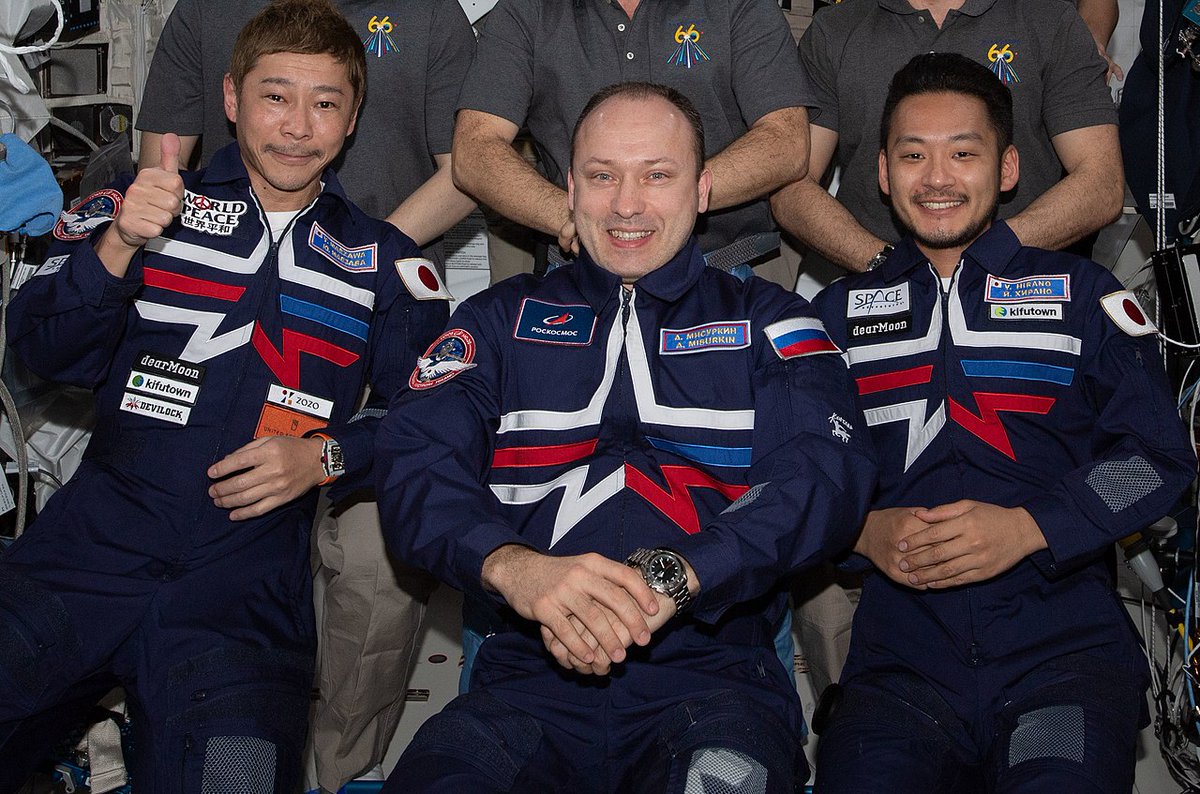
Yesterday #Roscosmos published a big interview of Vladimir Soloviev, the general designer of RSC Energia and the flight director of the Russian segment of the ISS. He talked a lot about the planned ROSS station. Here’s a quick summary for you. roscosmos.ru/38020 

At the first phase, #ROSS will be placed on a solar-synchronous orbit with an altitude of 334 km and inclination of 96.8°. Later it will be changed to 372 km and 96.9°. This will allow to observe most of the territory of Russia (and not only Russia, as Soloviev noticed).
This orbit will also allow to conduct the study of both Earth poles with optical, infrared, ultraviolet, radio and other detectors, and will allow to track the movement of various objects in the areas of the poles, which is an important scientific experiment.
In addition, a station on this orbit is less protected with the Earth magnetosphere from the space radiation, which will help to conduct medical experiments about the reaction of human body on this radiation and create the protection from it.
#ROSS will work mostly in automatic mode, without of the human presence on board, but may be visited if needed. As a result, the station will be used more efficiently not only from scientific, but also from the economic point of view.
Sorry guys, will continue this a little bit later.
Being a visited station, #ROSS will allow the scientists to conduct more experiments which were not possible to conduct on the ISS and Mir, for example because they both had a steady orientation in orbit.
Here I should notice that in Spring 2021 I was told that NEM, the first module of ROSS, will have no gyrodines, but this may be changed at the time it will be launched - K.P.
Vladimir Soloviev noticed also that the permanent presence of the crew takes a lot of energy produced by the station, and without the crew, this energy may be used for experiments. Not to mention that it’s very expensive.
The crew will be sent to #ROSS only for a period of one to two months to conduct experiments and perform repair works, and only when there is something to do. Soloviev believes, this is a step forward, not backwards, in using low Earth orbit for the benefit of humanity.
#ROSS will be build in 2 phases. The first phase will begin in 2028 with launching #NEM (with 2 crew cabins and a toilet) on Angara A5M from Vostochny. Aha, here he says that it should be equipped with gyrodines and other systems that will allow to use it in automatic mode first.
In the same year, a node module with 6 docking ports and an airlock module will be launched on another Angara A5M, and this will allow to send the first crew to begin the operation of ROSS. Later at the first phase, a base module will be added.
A base module will provide two additional sleeping places and a second toilet which will allow to have 4 cosmonauts on board. Both NEM and Base modules will produce about 55 kV of power, this is more than enough for most of the experiments.
The first crews will fly to #ROSS on Soyuz twice a year from Baikonur, and cargo will be delivered by Progress ships. It is expected that in 2030 the first phase will be completed (very optimistic plan in my humble opinion - K.P.).
Will continue later, stay tuned!
At the second phase, another two big modules - a Purpose module and a Production module - and a partly pressurized Service platform for the maintenance of the satellites will be added.
The Service platform will provide a possibility to re-equip, refuel and and re-sent into orbit satellites with help of inter orbital tugs specifically designed for that.
In the Production module, it will be possible to conduct different experiments in the field of space technologies, biotechnology, nanotechnology, micro- and nanoelectronics. The same applies to solving urgent problems in the field of biotechnology.
This module will be a place to store necessary equipment and details, there will be also a place for assembly and testing of automatic devices, and for the preparation, adjustment and repair of equipment.
The Purpose module will be equipped with universal work places (URMs) to place experiments inside and outside the module, like it was made on Nauka.
It is expected that at the second phase, the crews and the cargo will be delivered to #ROSS using the #Oryol spacecraft launched on Angara A5M. 

Soloviev believes, it is necessary to continue to use the Russian segment of the ISS until the first phase of ROSS will be ready to launch, to not to have a pause in crewed flights.
There are some ideas that may be implemented to the project of ROSS later, including the transformable module with a short-range centrifuge. They are discussed now.
According to Soloviev, ROSS is a necessary step for the crewed flights to the Moon.
He noted that the first crewed Soyuz ships will be launched from Baikonur on Soyuz 2.1b rocket, which is more capable that Soyuz 2.1a that launches Soyuzes to the ISS. Using Soyuz 2.1b, it will be possible to launch a crew of 3 members to ROSS.
If the decision to build #ROSS will be made (the article was written before the yesterday’s news), in 2022 RSC Energia will begin to create a preliminary design of ROSS, to launch the first module in 2028.
That’s all folks, thanks for reading this thread! Let me remind you that the original article is here: roscosmos.ru/38020.
• • •
Missing some Tweet in this thread? You can try to
force a refresh

















